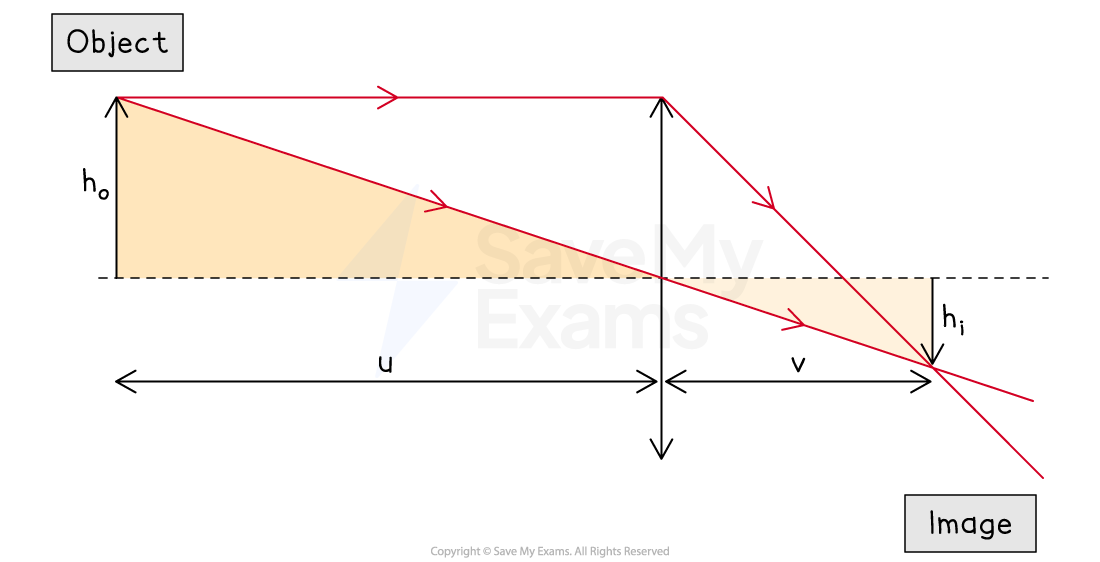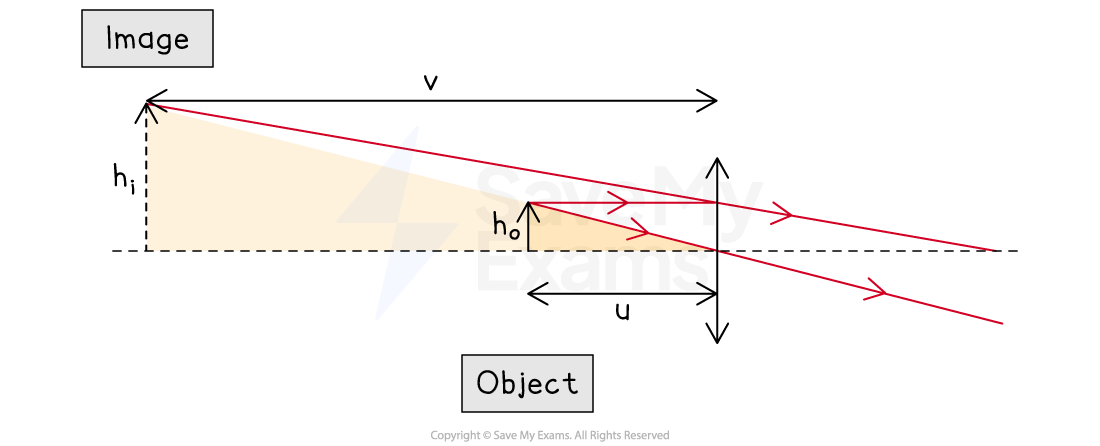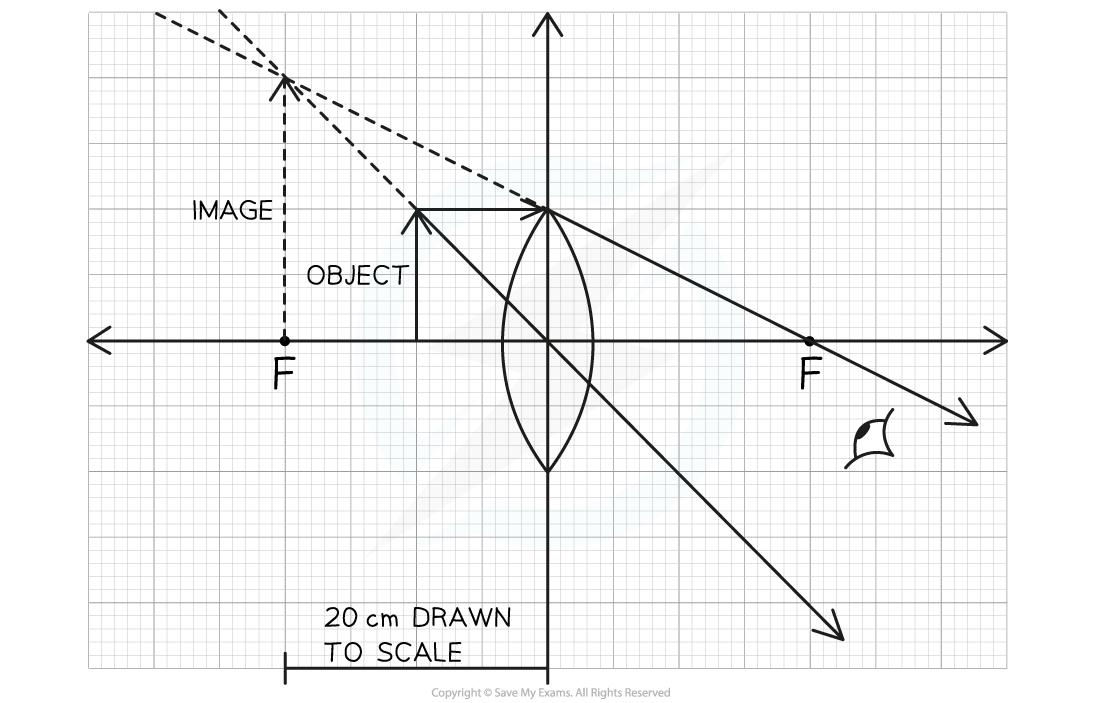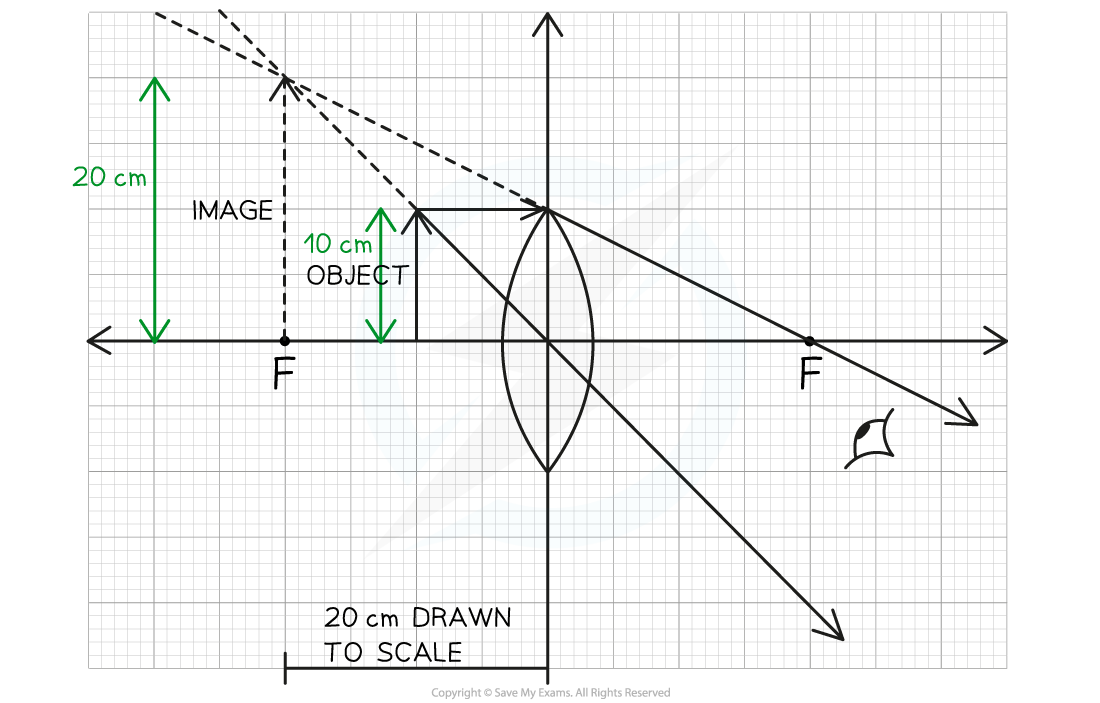Magnification (Edexcel A Level Physics): Revision Note
Exam code: 9PH0
Magnification
Magnification as a Ratio of Heights
Magnification means how much larger the image is than the object
This is the ratio of the image/object height
Where:
= magnification
= image height (m)
= object height (m)
Magnification as a Ratio of Distances
A diagram of an object and its real image will produce similar triangles
Therefore, the ratio of magnification is also represented by comparing the distance from the lens to the object and the image

This also works for virtual images

Where:
= magnification
= distance from lens to image (m)
= distance from lens to object (m)
Since magnification is a ratio, it has no units
Values of
can be positive or negative
If
is positive, then the image formed is virtual and upright
If
is negative, then the image formed is real and inverted
Worked Example
A magnifying glass has a focal length of 15 cm. It is held 5 cm away from a component which is being examined.
Determine the magnification of the image.
Answer:
Step 1: Write the known values
Focal length, f = 15 cm
Distance between object and lens, u = 5 cm
Step 2: Use the lens formula and rearrange to make v the subject
Step 3: Use the magnification formula to find the magnification of the image
The negative sign indicates a virtual image (expected for a magnifying glass)
Worked Example
A person sees an image through a magnifying glass.

Calculate the magnification of this image. Clearly show your working on the diagram.
Answer:

Step 1: Measure the height of the object from the scale
Height of the object: = 10 cm
Step 2: Measure the height of image from the scale
Height of the image: = 20 cm
Step 3: Substitute values into the magnification equation
Magnification:
Examiner Tips and Tricks
The most common mistake with magnification calculations is to get the formula upside down.
Do a 'sanity check' by looking at the answer to make sure that magnified objects have got bigger (m > 1) and diminished ones smaller (m < 1).
Since we are working with ratios (so the units get cancelled out), this is one of those rare times when you don't need to convert everything to SI units, but do check that your units are all the same - for example, all distances in cm.

Unlock more, it's free!
Did this page help you?